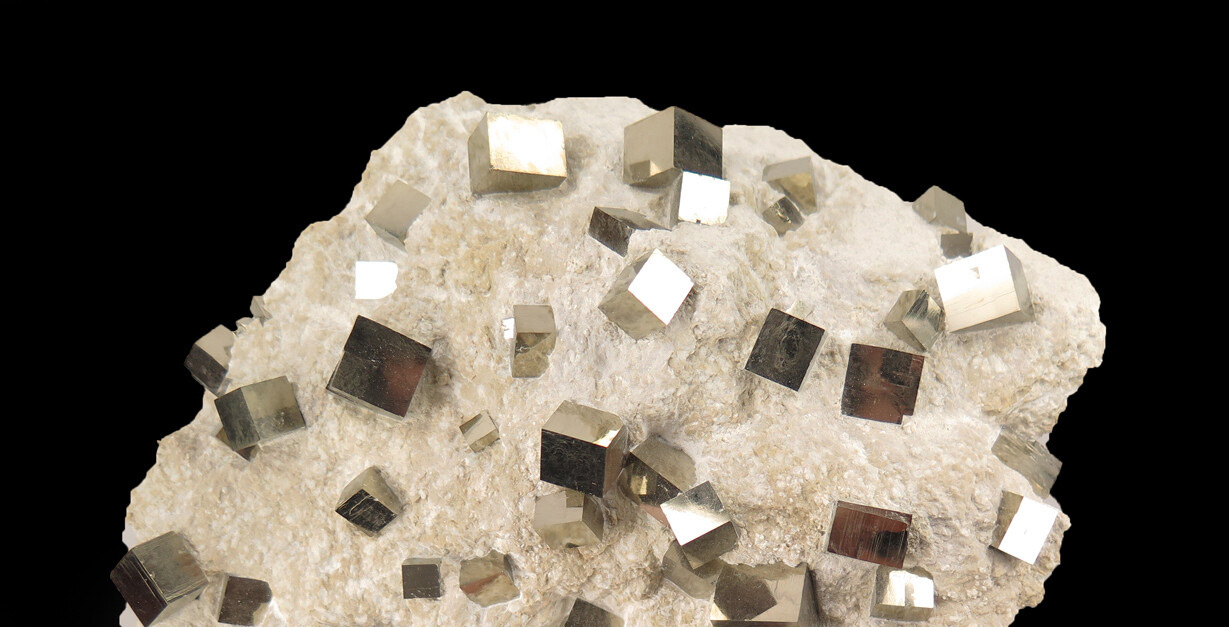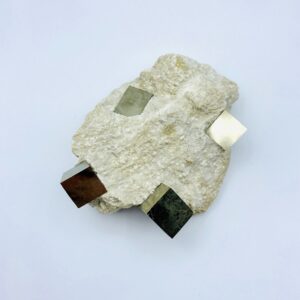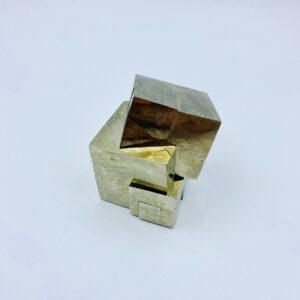Pyrite, also known as iron sulfide, is a common mineral found in many different types of rocks. The formation of pyrite crystals can occur in a variety of environments, but is typically associated with hydrothermal and sedimentary processes. In this article, we will focus on the formation of cubed pyrite crystals.
Cubed pyrite crystals are formed through a process called cubic crystal growth. This process occurs when the mineral is in a liquid or aqueous solution and is in a state of supersaturation. This means that the solution contains more of the mineral than it can hold in solution, and the excess begins to precipitate out as crystals.
During the formation of cubed pyrite crystals, the mineral begins to precipitate out in the form of small, cuboid-shaped crystals. These cuboids then begin to grow together, forming larger and larger cubes. The process of cubic crystal growth is driven by the natural tendency of the mineral to form symmetrical shapes.

image: 2 different formats of pyrite crystals
One of the key factors in the formation of cubed pyrite crystals is the presence of sulfur and iron ions in the solution. These ions are necessary for the formation of the mineral, and the ratio of sulfur to iron in the solution can play a role in the size and shape of the resulting crystals. The temperature and pressure conditions also play a role in the formation of cubed pyrite crystals.
Another important factor in the formation of cubed pyrite crystals is the presence of impurities in the solution. These impurities can affect the growth of the crystals, and can lead to variations in shape and size. For example, the presence of a small amount of copper ions in the solution can lead to the formation of copper-rich pyrite crystals, which may have a different color or shape than pure pyrite crystals.
Cubed pyrite crystals can be found in a variety of environments, including hydrothermal veins, sedimentary rocks, and volcanic rocks. They are often associated with other minerals such as quartz, calcite, and barite. They are also found in high-sulfur coal beds, which are a result of the accumulation of sedimentary rock layers that have been transformed by high-pressure, high-temperature conditions.
In conclusion, cubed pyrite crystals are formed through a process called cubic crystal growth, which occurs when the mineral is in a liquid or aqueous solution and is in a state of supersaturation. The process is driven by the natural tendency of the mineral to form symmetrical shapes and the presence of sulfur and iron ions. The temperature and pressure conditions, as well as the presence of impurities, also play a role in the formation of cubed pyrite crystals. These crystals can be found in a variety of environments and are often associated with other minerals.




